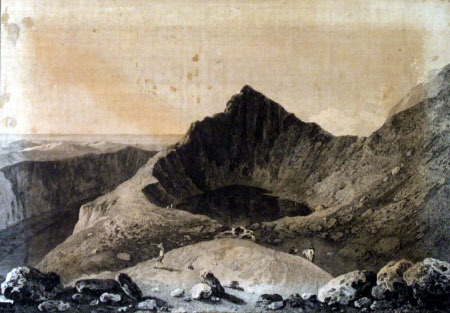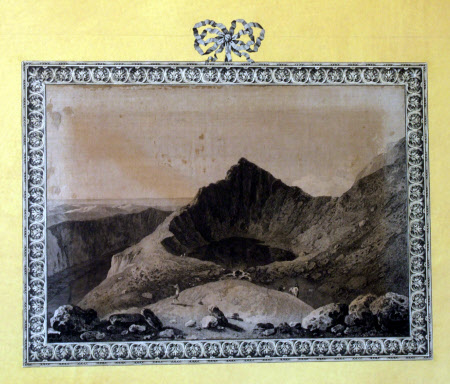Llyn Cau, Cader Idris (after Richard Wilson)
Edward Rooker (London 1724 – London 1774)
Category
Art / Prints
Date
1765 - 1767 - 1773
Materials
Engraving on paper
Measurements
355 x 505 mm
Place of origin
London
Order this imageCollection
Blickling Hall, Norfolk
NT 354113.27
Summary
Print, engraving on paper, Llyn Cau, Cader Idris (after Richard Wilson) by Edward Rooker (London 1724 – London 1774). Small lake at top of sharp-peaked mountain. Two men and a horse, a man shooting, four small figures around lake. Boulders in foreground. No inscription. Within reproduction border, with reproduction ribbon bow. From a collection of 52 prints, 18th century, affixed around the walls of the Print Room. The orginal painting is in Tate Britain, London. Wilson was the first artist to paint this view in Merionethshire, some seven miles from his birthplace and childhood home, Pengoes. It is taken from the slopes of Mynydd Moel about a mile from the volcanic lake of Llyn Cau near the summitt of Cader Idris. The valley of the Dysynni runs to the left below the cliffs of Craig Goch. Beyond the Bay of Cardigan is visible. The precipice of Craig Cau is heightened. A male figure with a telescope is in the left middle ground. He resonates Edmund Burke's A Philosophical Enquiry into the Origin of our Ideas of the Sublime and Beautiful (1757).
Makers and roles
Edward Rooker (London 1724 – London 1774), artist and engraver after Richard Wilson (Penegoes 1714 - Mold 1782), artist John Boydell I (Dorrington 1719 – Cheapside, London 1804), engraver and publisher
References
Pennant, 1773: Thomas Pennant, Tours in Wales, 1773, 2:88

